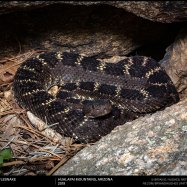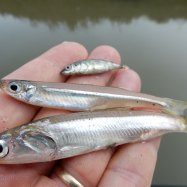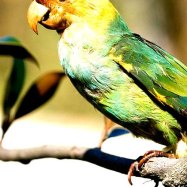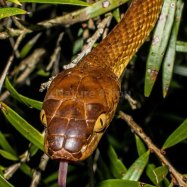
Crab Eating Fox
60-70 cm
The Crab Eating Fox, found in the Amazon Rainforest and Pantanal Wetlands, belongs to the Canidae family. With a slender body and long legs, it measures between 60-70 cm. These beautiful creatures are known for their crab-eating habits, making them an important part of the ecosystem. #AnimalFacts #Amazon #Pantanal #Canidae
Animal Details Summary:
Common Name: Crab Eating Fox
Kingdom: Animalia
Habitat: Tropical and subtropical forests, savannas, and wetlands
The Fascinating Life of the Crab Eating Fox: Natural Adaptations and Survival Strategies
The Amazon rainforest is known for its diverse and exotic flora and fauna. But perhaps one of the most intriguing and mysterious creatures hidden within its dense vegetation is the Crab Eating Fox. With its scientific name Cerdocyon thous and common name Crab Eating Fox, this fox is a unique member of the Canidae family found exclusively in South America. In this article, we will delve into the exceptional features and behaviors of this animal that have allowed it to thrive in its natural habitat Crab Eating Fox.The Taxonomic Classification of the Crab Eating Fox
Before diving into the characteristics of the Crab Eating Fox, let us first take a look at its taxonomic classification. The Crab Eating Fox belongs to the Animalia kingdom, Chordata phylum, and Mammalia class. As a member of the Carnivora order, it shares the same characteristics as other carnivorous mammals. However, it is placed in the Canidae family, which includes other canines such as wolves, coyotes, and domestic dogs.Habitat and Distribution
The Crab Eating Fox is native to South America, particularly in Brazil. It can be found in the lush Amazon rainforest and the vast Pantanal wetlands. These areas provide the perfect habitat for the Crab Eating Fox, as they offer an abundance of food sources and enough cover to hide from predators.Crab Eating Foxes have also been observed in other regions of South America, such as Peru, Colombia, Venezuela, and Argentina. However, their distribution is mainly restricted to tropical and subtropical forests, savannas, and wetlands Clownfish.
Physical Characteristics and Adaptations
The Crab Eating Fox has a distinct reddish-brown to gray fur, with a darker stripe running down its back. It also has a white throat and chest, giving it a striking appearance. Its fur is thick and dense, allowing it to withstand the harsh and humid climate of the rainforest.One of the most remarkable physical features of the Crab Eating Fox is its medium-sized body with a slender structure and long legs. This body shape enables it to move swiftly and effortlessly through the dense vegetation, making it an expert hunter. It has also been observed that they can climb trees, an ability not commonly seen in other canids.
Nutritional Needs and Feeding Behavior
As its name suggests, the Crab Eating Fox has a diversified omnivorous diet, making it a highly adaptable species. Its diet mainly consists of crabs, insects, and small vertebrates like rodents, lizards, and birds. It is also known to feed on fruits, berries, and other plant matter.The Crab Eating Fox has developed some impressive feeding techniques to effectively obtain its food. For instance, they have been observed to forage in shallow water, cleverly using their long and slender front paws to dig and catch crabs. They also have sharp teeth and powerful jaws, allowing them to effortlessly crush and break open the hard shells of crabs.
Behavior and Social Interactions
The Crab Eating Fox is mostly a solitary and nocturnal animal, meaning it is most active during the night. During the day, it spends most of its time hiding in burrows, hollow logs, and other hidden places. They are also known to be territorial animals and are rarely seen in groups.However, during the breeding season, they form monogamous pairs with distinctive behaviors. These pairs can be observed sharing food and playing with each other, strengthening their bond. The female gives birth to two to four pups, which are weaned and independent after six months.
Survival Strategies
Living in the dense rainforest, the Crab Eating Fox has developed some exceptional adaptations to ensure its survival. One of these adaptations is its keen sense of smell, which helps it detect prey and avoid potential dangers. Its sharp hearing and excellent vision also play a crucial role in its survival in the wild.The thick coat of the Crab Eating Fox provides insulation and protection against the humid and insect-infested environment. It is also known to have a unique behavior of sunbathing, which helps dry out its fur and eliminates parasites, making it less prone to infections.
Conservation Status and Threats
The Crab Eating Fox is currently labeled as a species of least concern by the International Union for Conservation of Nature (IUCN). However, their population is faced with numerous threats that could potentially push them towards endangerment.One of the most significant threats is habitat loss due to deforestation and human encroachment for agricultural purposes. This has also led to a decline in their food sources, posing a severe threat to their survival. Other threats include hunting for their fur and persecution by farmers due to perceived threats to livestock.
The Future of the Crab Eating Fox: Conservation Efforts
Despite the various threats faced by the Crab Eating Fox, there are ongoing efforts to ensure the conservation of this unique species. The establishment and preservation of protected areas, such as the Amazon Rainforest and the Pantanal Wetlands, have played a vital role in safeguarding the natural habitat of the Crab Eating Fox.Also, educational programs and research efforts have been conducted to raise awareness and gather more information about this species. This has provided valuable insight into their behavior and environment, helping in the development of effective conservation strategies.
In Conclusion
The Crab Eating Fox is a remarkable and fascinating creature that has evolved and adapted to survive in the dense and diverse Amazon rainforest. With its unique physical characteristics, diverse diet, and exceptional survival strategies, it is a true testament to the resilience and adaptability of nature. However, it is vital to recognize and address the threats faced by this species to ensure its continued survival and preservation for generations to come. By understanding and appreciating the beauty and importance of the Crab Eating Fox, we can play a vital role in their conservation and the preservation of our natural world.

Crab Eating Fox
Animal Details Crab Eating Fox - Scientific Name: Cerdocyon thous
- Category: Animals C
- Scientific Name: Cerdocyon thous
- Common Name: Crab Eating Fox
- Kingdom: Animalia
- Phylum: Chordata
- Class: Mammalia
- Order: Carnivora
- Family: Canidae
- Habitat: Tropical and subtropical forests, savannas, and wetlands
- Feeding Method: Omnivorous
- Geographical Distribution: South America
- Country of Origin: Brazil
- Location: Amazon Rainforest, Pantanal Wetlands
- Animal Coloration: Reddish-brown to gray
- Body Shape: Medium-sized with a slender body and long legs
- Length: 60-70 cm
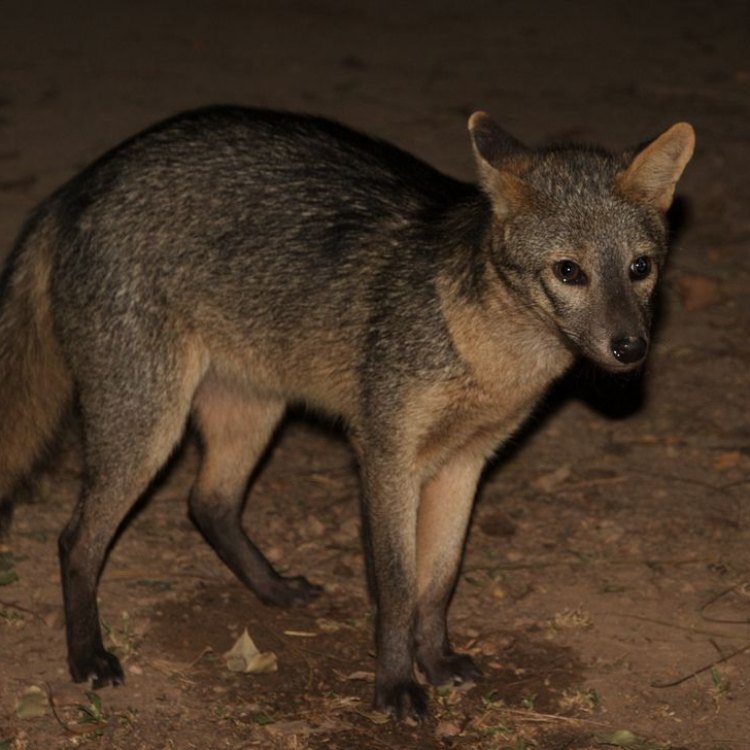
Crab Eating Fox
- Adult Size: 4-6 kg
- Average Lifespan: 10-12 years
- Reproduction: Sexual
- Reproductive Behavior: Monogamous
- Sound or Call: Barking, howling, and whimpering
- Migration Pattern: Non-migratory
- Social Groups: Solitary or live in small family groups
- Behavior: Nocturnal and crepuscular
- Threats: Habitat loss, hunting, and disease
- Conservation Status: Least Concern
- Impact on Ecosystem: Seed dispersal and regulation of prey populations
- Human Use: Hunted for fur in the past
- Distinctive Features: Large ears and a bushy tail
- Interesting Facts: Crabs make up a significant portion of their diet
- Predator: Various large carnivores
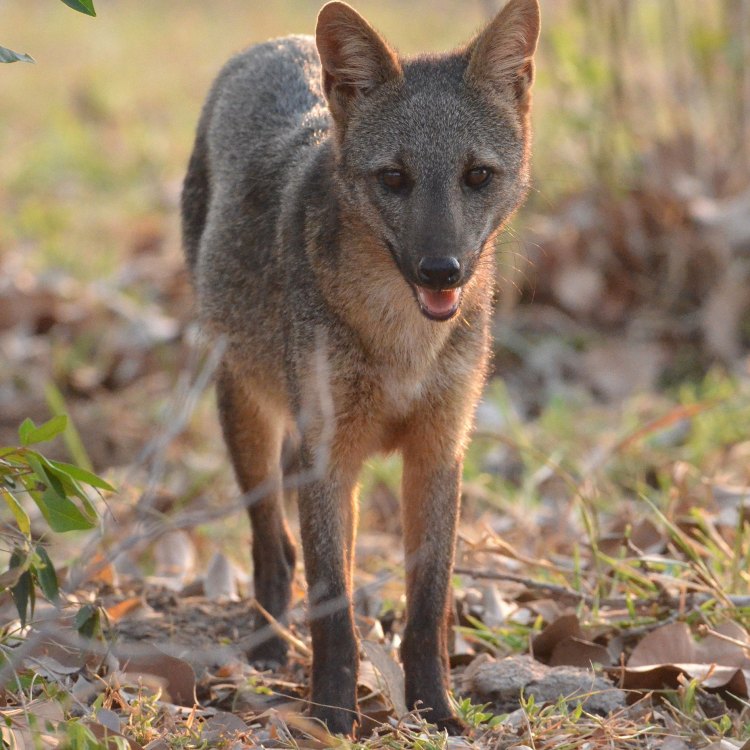
Cerdocyon thous
The Wild and Wonderful World of the Crab Eating Fox
The animal kingdom is a diverse and fascinating place, filled with creatures big and small, cute and ferocious. One of the more unique and lesser-known species is the crab eating fox, also known as the South American fox. Despite its name, this fox is not a picky eater and will consume a variety of prey, including crabs, fruits, and small mammals. In this article, we will delve into the intriguing world of the crab eating fox and discover what makes this species so special PeaceOfAnimals.Com.The crab eating fox, scientifically known as Cerdocyon thous, is a medium-sized canid found in South America, particularly in Brazil, Paraguay, and Argentina. Its name comes from its love for crabs, which it can easily crack open with its sharp teeth and strong jaws. However, this fox also has a varied and opportunistic diet, which includes fruits, insects, small mammals, and even carrion.
Size and Lifespan
The average adult crab eating fox weighs between 4-6 kilograms, making it one of the smaller members of the canid family. Its compact body is designed for agility and swift movement, essential for hunting prey in its natural habitat. Despite being relatively small, this fox can live up to 10-12 years in the wild, with some even living for 14 years in captivity.
Reproduction and Behavior
The crab eating fox is a sexually reproducing species, with monogamy being the norm within their social structure. They are typically solitary animals, but they may live in small family groups consisting of a mated pair and their offspring. These social units are usually territorial, with boundaries marked and defended against other foxes Cougar.
The fox's breeding season begins in August and extends through December, with females giving birth to litters of 2-4 pups. The gestation period lasts for approximately 60 days, and the female will give birth in a den, often in a hollow log or burrow. The pups are born blind and helpless, relying on their parents for food and protection. As they grow, they will eventually leave the den and start hunting with their parents until they are old enough to fend for themselves.
Sound and Migration Patterns
While the crab eating fox is not a migratory species, they do have a range of vocalizations, including barking, howling, and whimpering. These sounds are used for communication within their social group or to attract a mate. They also communicate through scent marking, with their urine acting as a territorial marker.
Social Groups and Behavior
As mentioned earlier, crab eating foxes are mainly solitary animals, except during the breeding season and when raising their young. They are primarily nocturnal and crepuscular, meaning they are most active at night and during twilight hours. This behavior helps them avoid the intense heat of the day and also allows them to hunt for their preferred prey, which is more active during these times.
Threats and Conservation Status
Like many other species, the crab eating fox is facing multiple threats, leading to a decline in their population. Habitat loss due to deforestation and human development is one of the main threats to these animals. They are also hunted for their fur, which was in high demand in the past but is now illegal in most countries. Additionally, diseases spread by domestic dogs can have a devastating effect on wild fox populations.
Currently, the crab eating fox is classified as "Least Concern" on the IUCN Red List, meaning they are not at risk of extinction. However, their population is decreasing, and conservation efforts are necessary to ensure their long-term survival.
Impact on Ecosystem and Human Use
Despite its small size, the crab eating fox plays a crucial role in its ecosystem. As an omnivorous predator, they help regulate prey populations, ensuring a balance in the ecosystem. They also contribute to seed dispersal, playing a vital role in the growth and diversity of plant communities.
In the past, humans hunted these foxes for their thick and soft fur, which was used to make hats and other clothing items. However, with stricter laws and conservation efforts, this practice has significantly reduced. Nowadays, these animals are mainly used for research purposes to better understand their behavior and ecology.
Distinctive Features and Interesting Facts
The crab eating fox has a unique appearance, with large ears and a distinctive bushy tail. These physical traits not only add to their charm but also serve a purpose. The large ears help them regulate their body temperature and listen for potential predators, while the bushy tail provides balance and acts as a signaling mechanism.
One interesting fact about the crab eating fox is that despite its name, crabs do not make up the majority of its diet. In fact, studies have shown that fruits make up the largest part of their diet, with crabs and insects being a secondary source of food. However, their love for crabs is still significant and plays a crucial role in shaping their environment, as they are the only known mammal species to efficiently crack open crabs.
Predators
Given their size and agility, the crab eating fox has a few predators to worry about. Large carnivores like jaguars, pumas, and large birds of prey pose a threat to these foxes. However, their elusive nature and nocturnal behavior make it challenging for predators to catch them.
In Conclusion,
The crab eating fox may not be as well-known as other canid species, but it is undoubtedly one of the more interesting and unique animals in the wild. From their monogamous reproductive behavior to their love for crabs and important role in their ecosystem, these animals have captured the hearts of those who have had the pleasure of encountering them. As we continue to learn more about these fascinating creatures, it is our responsibility to protect and conserve their habitat for future generations to enjoy.
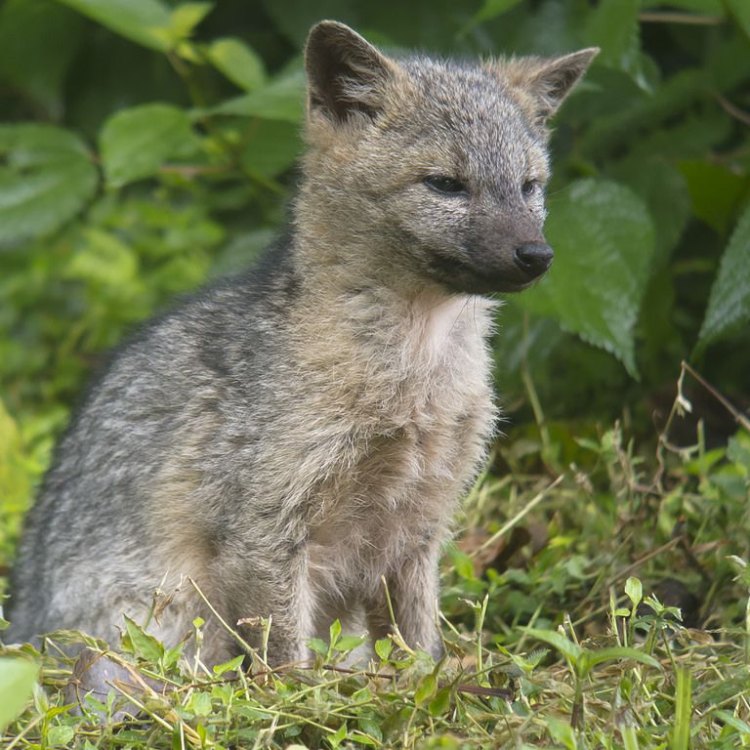
The Fascinating Life of the Crab Eating Fox: Natural Adaptations and Survival Strategies
Disclaimer: The content provided is for informational purposes only. We cannot guarantee the accuracy of the information on this page 100%. All information provided here may change without prior notice.


